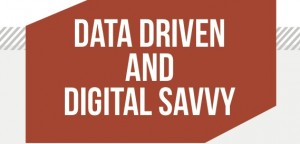With the advent of big data, media mix measurement and optimization has become a required staple in the marketer’s toolbox. Effectively media mix measurement and optimization is comprised of seven elements:
It’s true digital has taken over a lot of our lives. Whether it’s the all-knowing computers we carry in our pockets, backup cams on our cars, or the way many of us have been doing our jobs for the last year+, digital is clearly integrated in our lives. But when it comes to marketing, digital hasn’t run off the other ways of connecting with customers.
As companies are finalizing budgets for next year and marketers are fine-tuning their plans, it’s a popular time to look back at what worked and what didn’t. It’s also a critical opportunity to revisit your organizational strategy, realign your KPIs, and design a testing system that gives you actionable insights.
Recently, we spoke about the importance of Increasing Customer Lifetime Value. By optimizing offers for each targeted customer segment, you can improve the conversion rates for your best customers and increase their engagement and purchases.
The best marketing plans are a combination of data, customer insight, lessons from the past and educated guesses about the future. But what if, instead of planning, we could enjoy the benefits of a preseason like NFL teams? So I raised the hypothetical with our CEO Mike Caccavale, who like most of the crew in our Boston office, is a big Patriots fan. Here are some of his ideas.
We talk about proactive and reactive behavior in many areas of life – driving, parenting, relationships (guys, buy the flowers before she asks). And as marketers, we see – and dish out – a lot of both. And to some degree, that will always be the case. But there are some areas for improvement in how we handle the balance.
This is part one of an ongoing series about understanding your customer base.
There are many ways that we as marketers try to maximize our marketing efforts and spend. With every dollar scrutinized and every budget reviewed, how we spend our money has never been more important.

Marketing attribution, the process of identifying the “touches” that led to a sale, has never been more popular. Now, with social media marketing playing an ever-increasing role in marketing campaigns, companies are scrambling to trace the dollars spent on campaigns to specific sales. How many widgets did that tweet sell?
It always surprises me when I encounter a marketer who uses direct, singular attribution as the core of their marketing analytics. Don’t get me wrong; I understand the allure.

The promise of marketing analytics has long been surrounded by a haze of suspicion and poor execution. Too good to be true, too dismissive of the marketer’s intuition, analytics seem to some to be an expensive solution to a problem marketers do not think they have. Even for those marketers that understand the value of this technology, analytics often fail to meet their expectations. But why? We took a look in this infographic and discuss solutions below.
Consumers are connected to the brands they use in more ways than we could have imagined just five years ago. Today, consumers are reaching out to the brands, and no longer wait for brand initiated conversations.









